Comment: Roots of Karabakh conflict go back to Russian occupation of Caucasus
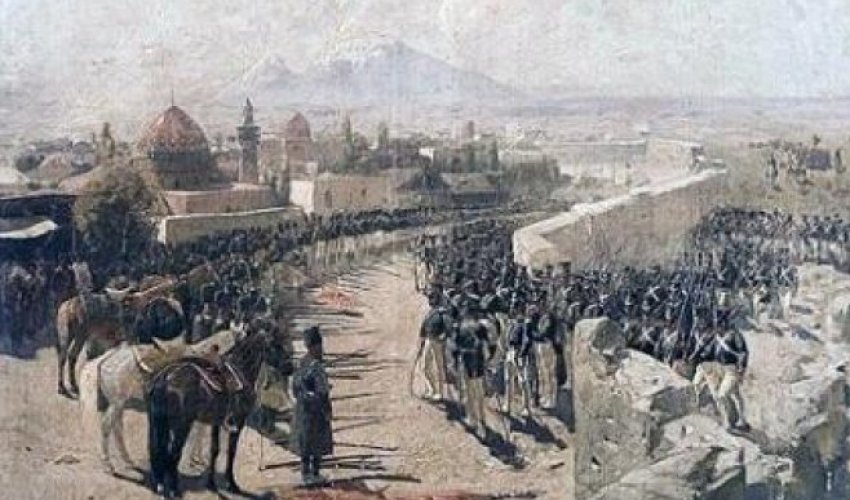
Karabakh’s history shows that Russia’s imperial policies have remained unchanged over the centuries. These policies have been accompanied by bloody wars, terror and dirty games by its rulers.
After the annexation of the Kakhetian kingdom in September 1801, Emperor Alexander the First issued a manifesto, laying out the basic principles of the Russian policy on the Trans-Caucasian states.
The main goal of this policy was to conquer those states at any cost. In the following decade, the Tsarist Russia pursued very dirty policies. It did not stop at anything, carrying out political killings, sending entire communities into exile and waging wars. As a result, all the states in the Trans-Caucasian region were conquered.
We talked to journalist Sergey Sivolap, who is also an expert in the history of the East and the Caucasus, on these lessons of history and frozen conflicts that need to be taken account while analyzing today’s developments in Ukraine.
- The political legacy of the Karabakh khanate, which was the last independent feudal Azerbaijani state in the territory of Karabakh, up until the establishment of the tsarist rule in the South Caucasus, is of great importance for understanding the origins of the Karabakh conflict, right?
- Above all, let's start with the fact that the Karabakh khanate was one of the main participants in the dramatic, bloody and, most importantly, tragic (for Azerbaijanis) war that erupted between Russia and the Iranian Qajars at the end of the 18th century. The khans (rulers) of Karabakh, like the other feudal rulers of the then fragmented Azerbaijan, found themselves between the "Russian rock and Iranian hard place”, as academician Ramiz Mehdiyev put it, and had to maneuver desperately for survival.
At times, they had to pay a very high price for the maneuvers to preserve their independence, scarifying the lives of thousands of brave sons of Azerbaijan. Things were twice as painful for Karabakh due to its geographical proximity to Iran and its exceptional geopolitical importance.
Constant infighting between the local khans, frequent attacks and pressure by the Qajars seeking to restore the former glory of the Safavids and Nadir Shah and ensure the unity of Azerbaijan and Iran led to devastation and significant losses of life in Karabakh.
In later years, the Karabakh khans also had to fight against separatism by the khanate’s Christian minorities, including Armenians who smelled of the Russian aggression with great pleasure and adjusted to the interests of the Tsars, effectively turning into a "fifth column" inside the khanate. Armenian authors have always argued that ethnic Armenians made up a majority of the population in Karabakh and therefore had a final say in political decisions. However, archive documents of the Tsarist administration of the region and political history of the Caucasus show the opposite.
Armenians themselves have repeatedly acknowledged that. For instance, the authors of the book "The Merger of Eastern Armenia with Russia" say that about 12,000 families lived in Karabakh in 1810, i.e. five years after the region’s annexation by Russia. Of them, 9,500 were Azerbaijani families and 2,500 Armenian.
Citing a number of first-hand sources, Azerbaijani researcher Zulfiya Haciyeva provides different figures. According to Haciyeva, after the annexation of Karabakh, the Russian imperial authorities started taking concerted action to strengthen the Christian Armenian element in the region and displacing the local Azerbaijani Muslim population.
- How did the ethnic and demographic picture of the region change?
- On November 15, 1816, the commander of the Russian army in the Caucasus, General Yermolov, ordered Colonel Radinskiy to deport Abulfat Aga, a son of the late Ibrahim khan, along with 4,000 Muslims, who were definitely Azerbaijanis. This is not the only evidence of the forced resettlement of the Azerbaijani population of Karabakh by the imperial administration. Summarizing statistics of official documents of the then Caucasian administration, researcher Haciyeva provides the following figures on the ethnic and religious composition of Karabakh: At the beginning of the 19th century, there were 22,500 households in the Karabakh knanate. Of them, more than 17,000 were Azerbaijani Turks. In other words, only 20 percent of the population of the Karabakh khanate was Christian Armenian. About 80 percent of the population was Azerbaijani Turkic.
Another important evidence of the small size of the Christian Armenian population in Karabakh can be found in the Kurekchay agreement that was signed on May 14, 1805 between the Russian Empire and the Karabakh khanate. There was no mention of local Armenians in the agreement. On their list of obligations, neither side took an obligation to respect the rights or protect the Armenian population of the khanate. According to historian Karim Shukurov, the Kurekchay agreement consists of a preamble and eleven articles.
According to the preamble, the Russian Empire would take over the Karabakh khanate. Articles 1,4,6,8 and 9 are about the obligations of Ibrahim khan, and articles 2, 3, 5 and 7 mention the obligations of the Russian Empire.
One of the most important points is that, in all articles Ibrahim Khan is referred to as the ruler of Shusha and Karabakh.
Another important issue is that the emperor guaranteed the integrity of the Karabakh khanate. Article 10 of the agreement says that the agreement was signed for ever and would not be subject to any changes in the future.
So, the Kurekchay agreement says nothing about the Karabakhi meliks or the local Armenians.
- Did the Karabakh khanate have a Christian population?
- As for the Christian population of Karabakh, its presence was never disputed by Azerbaijani historians. The only issue raised was about the numbers and the ethnic origins of this community. Academician Ramiz Mehdiyev, citing data provided by S. D. Burnashev, a statesman and researcher who represented the Russian emperor at the court of Georgian King Irakli II, says that "7,000 Christian households" lived in Karabakh. The Christian community included Armenians. In other words, "Armenians made up only part of the Christian population of Karabakh".
At the beginning of the 19th century, the tsarist government began aggressively knocking on the doors of the Azerbaijani khanates. To protect Karabakh’s unity, Ibrahim khan had to embark on a dangerous diplomatic game with the tsarist government that led to his tragic death. Russia, which took the Karabakh ruler under his protectorate under the Kurekchay agreement signed on 14 May 1805, did not keep its promises to Ibrahim khan and his descendants. First, as a result of planned conspiracy and intrigue with the participation of Armenian and Russian military, Ibrahim khan was physically removed. The Russian governors of the Caucasus were seriously concerned about Ibrahim khan’s diplomatic skills and his popularity among the population of Karabakh. The brutal killing of Ibrahim khan and his family, including young children, helped the tsarist government to avoid meeting the obligations it had taken under the Kurekchay agreement.
To this day, Russian historians are trying to justify this brutal crime, which of course is unacceptable from the standpoint of historical objectivity and truth. Contrary to claims by Russian historians, Ibrahim khan never took part in Iran’s anti-Russian conspiracies afer he signed the Kurekchay agreement. Despite all the pressures by Fathali Shah, he did not take any steps that would violate the terms of the agreement signed with Russia. Major Dmitriy Lisanevich, the man who assassinated Ibrahim khan and his family, not only avoided punishment but got promoted. This raises a lot of questions as to who in fact ordered this political terror. In the context of these events, we cannot but agree with Academician Ramiz Mehdiyev, who views the massacre of Ibrahim khan and his family as an unambiguous order from the top, which was fully consistent with the interests of the tsarist government.
Trying to justify Dmitry Lisanevich’s action with the possibility of "unexpected action" by Ibrahim khan does not hold water as the Karabakh ruler was a fierce enemy of Iran. Agha Mohammad Qajar had been killed in Shusha. All this gives serious grounds to assert that the killing of Ibrahim khan, one of the most powerful rulers in the Caucasus, did not happen spontaneously. It was a political order by the Russian state.
- This is evidenced by the rapid career growth Lisanevich?
- Lisanevich, the former chief of the garrison of Shusha, continued his service in the Caucasus. In 1824, at the personal order of Emperor Alexander I, he was appointed commander of troops in the Caucasus, being promoted to the rank of Lieutenant General. Research by Azerbaijani authors, based on first-hand sources, clearly indicate that Armenians were actively involved in the intrigues against the ruler of Karabakh, which ended in his tragic death. For example, Azerbaijani researcher Eldar Amirov, in an article written in protest to his Russian colleague Vasily Kashirinykh, who tried to justify the despicable crime committed by the tsarist government against Ibrahim Khan and his family, provides strong arguments about the involvement of Armenians in this terrorist act.
Among the accomplices, American researcher Alexander Atkin mentions the name of a certain Armenian melik called Jamshid, who was an old enemy the Khan. For many years, Jamshid nurtured the idea of overthrowing the khan and turning Karabakh into a protectorate headed by Armenian governor.
Perhaps Jamshid also hoped to hold this post. In 1797, he moved to Georgia, where he was received by the king and received a pension of 1,400 rubles from him. A year later, he returned to Karabakh. Among the intriguers, Alexander Atkin also mentions the names of Mehdi and Jafarqulu, the son and grandson of Ibrahim who were seeking to take the opportunity to seize power. Possibly, Lisanevich too was not against the idea of becoming the sole ruler of the rich region. Therefore, he brutally got rid of the authoritative khan at the first opportunity.
- So the seeds of the current conflict were sown back then?
- A detailed and objective study of the political legacy of the Karabakh khanate is important because of the fact that the seeds of so many troubles and tragedies in modern history of Azerbaijan were sown by the tsarist government and Armenian ideologists back then. We can say without any exaggeration that the events that took place in the waning years of the Karabakh khanate were a prelude to many subsequent tragedies in Azerbaijan. The mass resettlement of Armenians in Karabakh, the abolition of the centuries-old Albanian Apostolic Church and many other steps aimed at driving out Azerbaijanis, and the destruction of the rich heritage of Azerbaijan were made possible as a result of the elimination of the khanate.
For the 74 years of its existence, the Karabakh khanate enriched the history of Azerbaijan with many prominent public figures and skillful diplomats, who despite the complicated international situation successfully managed to maintain the independence of Karabakh and protect the interests of their motherland. Along with this, the history of the Karabakh khanate was accompanied by constant wars, battles and sieges, representing the military glory of the Azerbaijani people.
Suffice it to mention the defense of the city of Shusha, where the defenders demonstrated unprecedented courage and steadfastness in the fight against Agha Mohammad Qajar’s army, which outnumbered the Karabakhi army by several times.
There is no doubt that the political legacy of the Karabakh khanate will remain in Azerbaijan’s history with all of its successes and failures, ups and downs and outstanding personalities. Every Azerbaijani needs to take lessons from this heritage. As the great Arab thinker Ibn Khaldun said, the past events are similar to today’s as two drops of water. History is not a teacher but a wardress. It does not teach anything but punishes if you do have not learned your lessons. This is more so today, when Azerbaijan is forced to counter an Armenian aggression as it was during the times of the Karabakh khanate to defend its historical rights to this beautiful and ancient land. The Karabakh khanate does not exist today. Yet the wounds inflicted on it at the time continue bleeding. The plot is the same, the participants and the goals are the same, only the time is different.
Written by Ivan Venzhik
www.ann.az
Similar news
Similar news
Latest news 
More news 
























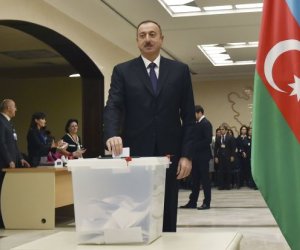
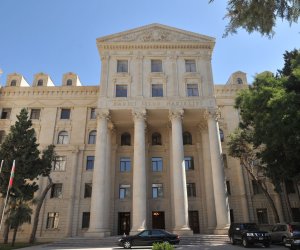




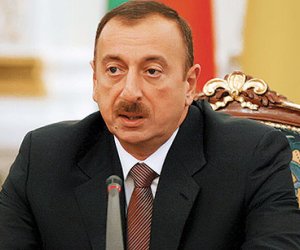
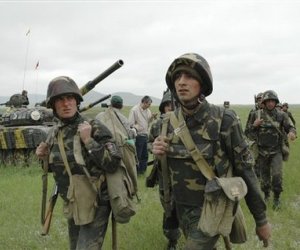
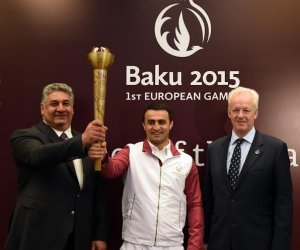


 Photo
Photo 


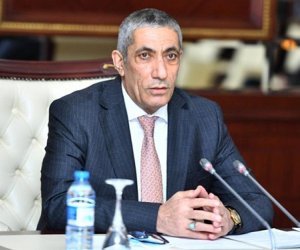
 Video
Video 

